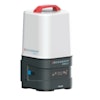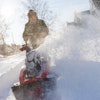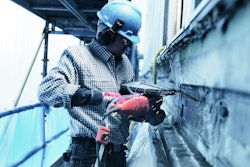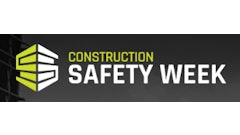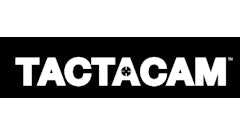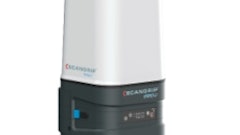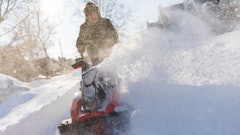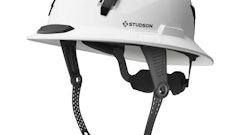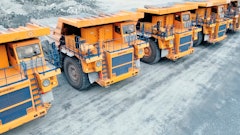
The construction industry in the US, Canada and beyond has been demanding the use of aerial work platforms to access work at height – outside the platform. Manuals and current guidance do not allow the practice without permission and instructions from the manufacturer, but many workers don’t view the process of seeking permission as a practical and timely solution to the problem.
In reality, the practice of exiting the platform at height does happen on jobsites because it’s sometimes the safest way to carry out temporary work at height. Other times it occurs unsafely, with no instructions or guidance to follow. The questions up for debate are whether the practice of entering/exiting an aerial work platform at height is a reasonable way to accomplish a task, and if so, what can be done to ensure it’s done in the safest possible manner?
Jenny Lescohier: Why is entering/exiting from an elevated AWP such an issue?
John Rickert: There’s a certain amount of awkwardness built into entering or exiting an aerial work platform at height. On the re-entry at height, there’s no control if there’s nobody in the machine. Unless there’s some kind of setup for 100-percent tie-off, the user is not only getting off the lift onto what might be a changing work area, he’s also doing a mildly disorienting thing by going underneath a rail. That being said, once you tie off to something outside the lift, now the user is vulnerable if something happens with the lift. Without specific instructions on how the practice should be done, it’s just sort of done off the cuff.
I’ve seen scissor lifts being used as an elevator or a material lift on a job. I’m concerned that they’re jumping genres; going from something that was made for powered access, and then changing the actual intent of the design. This lends itself to a cowboy mentality. The user is trying to use this as a way to accomplish a task without putting sufficient planning into it.
Tony Groat: If the machine isn’t specifically approved for entering or exiting – and typically they are not – then the application is not approved. But current language says entering and exiting at height can be done, “If permitted by the manufacturer.” The construction industry looks at the equipment as one of the more safe ways to provide access in many situations. So, the complaint in the industry is that we don’t provide guidance and for the most part, prohibit the use of aerials in that application, and they’re looking for standards to provide guidance for this.
Currently, when people are doing this, they do have a cowboy mentality, which is: “find a way to get it done.” Here’s a machine which is typically not used as an elevator. It’s a work platform, and now we’re getting in and out of it. How can we do this properly? If we open this door, are we suddenly saying these devices can be used as elevators?
Damon Bonneau: This is not a new area for OSHA. There’s a letter of interpretation from 2001 where someone asked if OSHA had standards that prohibit exiting aerial lifts at height and OSHA’s reply was no, the standard doesn’t do that. However, if you come out of that lift, then you fall under another standard: Subpart M for fall protection or Subpart R for steel erection. Once you exit the aerial lift, then you immediately fall under the requirements of Subpart M that says if you’re above 6 feet, you have to have fall protection. We don’t have a standard that prohibits leaving that lift, but we do have standards that say if you’re working at height, then you have to be protected from falls.
Chuck Harvey: Employers must ensure they do a hazard analysis for all their activities. In this case, that analysis should include items like site conditions, possible electrical hazards, proper equipment setup, and fall protection training and equipment, to name a few. There was a case I found in our files involving a fatality where somone got off an aerial lift, walked onto another surface and fell through a ceiling sky light. Obviously they had not done a complete analysis of the other surface. That’s where OSHA’s concern is. Where are people getting hurt by this? There’s no specific standards, but in these cases, employers were cited under OSHA’s general duty clause. The employer has the responsibility to keep their people safe.
Lescohier: As far as regulations or standards, it sounds like there isn’t really something prohibiting this practice, but when someone exits the lift, they fall under different requirements.
Bonneau: That is correct. Once you exit the lift at height, then you’re covered under fall protection standards – Subpart M, Subpart R, and Subpart L – and you have to meet those requirements. Fall protection, that is the bottom line. Employers have to protect workers at all times.
Lescohier: The need for guidance was mentioned. Is there any kind of effort being put forth to create this guidance?
Groat: The ANSI A92 standards have a prohibition unless it’s specifically approved by the manufacturer. The language says: “If permitted by the manufacturer, personnel shall only vacate or enter raised platforms following the guidelines and instructions provided by the manufacturer.” If those aren’t in place, the standards then prohibit it.
Both ANSI the CSA are actually looking at this issue. The industry is saying, “We do this. We exit the platform.” OSHA is saying they don’t have a prohibition for it, and the restriction of the language that puts the onus on the manufacturer is too limiting. I can’t imagine that every time someone in the industry wants to exit the platform, they’re going to call the manufacturer to get authorization for it. It’s unrealistic.
Brent Hoover: JLG does just that. We have a letter we send out on a regular basis to customers that are asking about transfer at height. JLG does approve the act of transferring at height. In the letter we send, we require 100-percent tie off using two lanyards, and the platform must be within one foot of a suitable structure to transfer to.
Groat: The real question is whether or not the standards need to say any more than that or whether we need to take the language that manufacturers reference and universally apply it, and consider those for adoption into the standards.
Keep in mind, we also have state OSHAs. In Michigan, they actually have a provision for exiting a platform. It says, “[Operators] may exit with knowledge and consent of the employer...” which really extends what Chuck was saying is the hazard analysis. The assumption is that the employer must make sure their people are doing what needs to be done.
Lescohier: Bottom line, do you think entering/exiting an aerial work platform at height is something that can be done safely?
Rickert: If it’s addressed correctly and meticulously, it’s probably superior to ladders and other forms of access. But is there a criteria for the employer to consider when he puts it into his plan? Instead of just saying you must have the approval of the employer, also say the employer must follow certain criteria. Establishing a criteria and having some sort of framework to establish safety is always desirable.
Lescohier: What are some of the primary risks associated with entering/exiting an aerial work platform at height?
Groat: Falls are the number one hazard in the industry as a whole. When you’re looking at whatever the practice is, the real risk is a fall.
Harvey: Another hazard that needs to be considered is the other surface you’re exiting to/entering on. What is the condition of that surface? There’s not a specific rule, but it’s a concern that an employer needs to consider because if someone’s walking off onto a surface that might not be able to sustain their weight, they could have a fall.
Bonneau: The fall protection standard specifically instructs employers to ensure the integrity of the surface that their employees have to work on. When you enter/exit at height, the requirement is 100-percent fall protection – be it with guard rails or fall arrest systems – to protect the worker must be in place. The employer is charged with ensuring those requirements are met.
When we ask whether entering/exiting an aerial work platform at height can be done safety, well, it’s a reality of life in the construction business. You have to protect your workers if they’re above a certain height. Fall protection systems could mitigate the hazard and protect workers against fall hazards.
Can it be done safely? I believe it can. If the employer does a hazard analysis, if the employer enforces the requirements of fall protection, if the decision is not left up to the employee to make (not being done off the cuff, or using the cowboy mentality as highlighted by Mr. Rickert earlier) and if the employer is driving that train to make sure the employees are protected, then that process should be able to be done safely.
Groat: If you go out and look, every day will you find people working outside the platform. Are we adding a risk because people can more easily misinterpret what we mean by entering/exiting? Truthfully, from a practical standpoint, I would say yes. I think the description of the cowboy mentality is right on. One of the strengths of the industry is operators find a way to get it done. One of the weaknesses is, they find a way to get it done.
Lescohier: So what is the solution? Where do we begin?
Groat: The standards should be able to provide some criteria and guidance that are minimum requirements. Obviously, OSHA has Subpart M, which is fall protection in general. But does that apply to an aerial work platform when you have a full guard rail platform, a gate, and when you’re accessing an unknown area? I think risk assessments are part of it, and providing some very specific guidance so that when you do a risk assessment, everybody isn’t doing whatever they think is the right thing. Having guidance is a big step forward.
Bonneau: OSHA does say in its 2001 letter of interpretation that someone can move between the lift and the surface, provided they’re protected from falls during that process. OSHA says if you’re going from a lift to the surface, you have to have fall protection. It doesn’t even matter if it’s a steel worker or an iron worker or whatever, if they’re transferring between the lift and surface, fall protection must be provided.
What happens when they’re going over the guard rail? Well, they have to be protected by fall protection. They have to be provided fall protection: guard rails or fall arrest systems. To expand on the guidance is maybe something that could be done to improve safety, but there is some basic guidance that’s in place right now.
Lescohier: Under whose purview does the expansion of the guidance fall?
Groat: It’s the ANSI standards which our industry follows, from manufacturing to safe use to operation. I think the ANSI standards would have to expand upon it. One of the arguments from the construction industry is that the current language is very restrictive because it allows the practice only with the approval of the manufacturer, and following the manufacturer’s guidance and direction. The industry is looking to have more universal guidance and saying if we do a risk assessment and find that this is the most appropriate means of getting the job done, give us the rules on how to do it.
Right now, the standard committees are looking at this topic to try to expand the current language to address the issue beyond manufacturer approval. If employers do a risk assessment under these criteria, then entering and exiting from an aerial work platform at height could be done safely. That’s how I’m seeing it moving forward.
Hoover: Expanding the guidance would be a good start. JLG would support it. We’ve had the position and additional instructions available for a long time now. I think it’s probably the first step.
Groat: If we provide some guidance, we can get to the point where we won’t have people just universally believing they can do anything. We can say, if they want to work outside the platform, go ahead, because we’ve given them permission to work outside the platform. We just need to make sure we don’t open the door to the point where people can misinterpret what approval means. We need to provide guidance that says, “under these check points, then yes, but if you don’t hit those check points, then no.”
Rickert: It always helps to have some kind of guidance to use as a framework. It gives people a little more structure to their actions instead of carte blanche no, or carte blanche yes.
All things considered, AWP access is one of the safest ways to work at height, but we have to warn people of what can go wrong. Having standards that would address it might make the end user more aware of what he could be doing that’s wrong.
Groat: An aerial lift is not a transport platform. There are transport platforms to provide access to different work areas on a building. They’re faster, they’re more efficient, they’re going to have criteria on gating, on and off of every floor deck, and you’re not going to have that criteria with a scissor lift. One is designed for a very specific purpose and the equipment designed for that purpose should be your first choice when attempting a task. On the opposing side, when we reference ladders or scaffolding by comparison to an aerial lift, there are many safety advantages to an aerial lift. There’s a full guard rail platform, there’s no climbing up and climbing down. There’s no assembly and disassembly. With all things in balance, however, you just don’t want to universally say it’s the best thing on all projects in all applications.
Risk assessments are going to be a big part of this. There are places where an aerial work platform is the best and safest choice. But there are other times that it won’t be.
Rickert: If aerial work platforms are being used as a form of access because they are the best way to get a job done, it should be addressed in the training before the person is out there and up there. There’s a certain amount of inherent risk, but we can mitigate the risk through training and fall protection and standards.
The construction industry in the US, Canada and beyond has been demanding the use of aerial work platforms to access work at height – outside the platform. Because of the many variables that can exist in workplace scenarios where access beyond the confines of an elevated platform might be sought, many manufacturer manuals and current guidance do not allow it without permission and instructions - while many workers do not view the process of seeking permission to exit a platform at height as a time-effective use of their work resources. In reality, this practice occurs on jobsites, as it is sometimes the safest way to carry out temporary work at height. Other times it occurs unsafely, with no instructions or guidance to follow. The questions up for debate are whether the practice of entering/exiting an aerial work platform at height is a reasonable way to accomplish a task, and if so, what can be done to ensure it's done if the safest possible manner?
Jenny Lescohier: Why is entering/exiting from an elevated AWP such an issue?
John Rickert: There's a certain amount of awkwardness built into entering or exiting an aerial work platform at height. On the re-entry at height, there's no control if there's nobody in the machine. Unless there's some kind of setup for 100-percent tie-off, the user is not only getting off the lift onto what may be a changing work area, but he's also doing a mildly disorienting thing by going underneath a rail. That being said, once you tie off to something outside the lift, now the user is vulnerable if something happens with the lift. Without specific instruction on how the practice should be done, it's just sort of done off the cuff.
I've seen scissors lifts being used as an elevator or a material lift on a job. I'm concerned that they're jumping genres; going from something that was made for powered access, and then changing the actual intent of the design. This lends itself to a cowboy mentality. The user is trying to use this as a way to accomplish a task without putting sufficient planning into it.
Tony Groat: If the machine isn't specifically approved for entering or exiting - and typically they are not - then the application is not approved. But current language says entering and exiting at height can be done, "If permitted by the manufacturer." The construction industry looks at the equipment as one of the more safe ways to provide access in many situations. So, the complaint in the industry is that we don't provide guidance and for the most part, prohibit the use of aerials in that application, and they're looking for standards to provide guidance for this.
Currently, when people are doing this, they do have a cowboy mentality, which is: "find a way to get it done." Here's a machine which is typically not used as an elevator. It's a work platform, and now we're getting in and out of it. How can we do this properly? If we open this door, are we suddenly saying these devices can be used as elevators?
Damon Bonneau: This is not a new area for OSHA. There's a letter of interpretation from 2001 where someone asked if OSHA had standards that prohibit exiting aerial lifts at height and OSHA's reply was no, the standard doesn't do that. However, if you come out of that lift, then you fall under another standard: Subpart M for fall protection or Subpart R for steel erection. Once exit the aerial lift, then you immediately fall under the requirements of Subpart M that says if you're above 6 feet, you have to have fall protection. We don't have a standard that prohibits leaving that lift, but we do have standards that say if you're working at height, then you have to be protected from falls.
Chuck Harvey: Employers must ensure they do a hazard analysis for all their activities. In this case that analysis should include items like site conditions, possible electrical hazards, proper equipment setup, and fall protection training and equipment, to name a few. There was a case I found in our files involving a fatality where someone got off an aerial lift, walked onto another surface and fell through a ceiling sky light. Obviously they had not done a complete analysis of the other surface. That's where OSHA's concern is. Where are people getting hurt by this? There are no specific standards, but in these cases, employers were cited under OSHA’s general duty clause. The employer has the responsibility to keep their people safe.
Lescohier: As far as regulations or standards, it sounds like there isn't really something prohibiting this practice, but when someone exits the lift, they fall under different requirements.
Bonneau: That is correct. Once you exit the lift at height, then you're covered under fall protection standards - Subpart M, Subpart R, and Subpart L - and you have to meet those requirements for fall protection - that is the bottom line. Employers have to protect workers at all times.
Lescohier: The need for guidance was mentioned. Is there any kind of effort being put forth to create this guidance?
Groat: The ANSI A92 standards have a prohibition unless it's specifically approved by the manufacturer. The language says: "If permitted by the manufacturer, personnel shall only vacate or enter raised platforms following the guidelines and instructions provided by the manufacturer." If those aren't in place, the standards then prohibit it.
Both ANSI the CSA are actually looking at this issue. The industry is saying, "We do this. We exit the platform." OSHA is saying they don't have a prohibition for it, and the restriction of the language that puts the onus on the manufacturer is too limiting. I can't imagine that every time someone in the industry wants to exit the platform, they're going to call the manufacturer to get authorization for it. It's unrealistic.
Brent Hoover: JLG does just that. We have a letter that we send on a regular basis to customers who are inquiring about transfer at height. JLG does approve the act of transferring at height. In the letter we send, we require 100-percent tie off using two lanyards, and the platform must be within one foot of a suitable structure you're transferring to.
Groat: The real question is whether or not the standards need to say any more than that or whether we need to take the language that manufacturers reference and universally apply it, and consider those for adoption into the standards.
Keep in mind, we also have state OSHAs. In Michigan, they actually have a provision for exiting a platform. It says, "[Operators] may exit with knowledge and consent of the employer..." which really extends what Chuck was saying is the hazard analysis. The assumption is that the employer must make sure their people are doing what needs to be done.
Jenny: Bottom line, do you think entering/exiting an aerial work platform at height is something that can be done safely?
Rickert: If it's addressed correctly and meticulously, it's probably superior to ladders and other forms of access. But is there a criteria for the employer to consider when he puts it into his plan? Instead of just saying you must have the approval of the employer, also say the employer must follow certain criteria. Establishing a criteria and having some sort of framework to establish safety is always desirable.
Lescohier: What are some of the primary risks associated with entering/exiting an aerial work platform at height?
Groat: Falls are the number one hazard in the industry as a whole. When you're looking at whatever the practice is, the real risk is a fall.
Harvey: Another hazard that needs to be considered is the other surface you're exiting to/entering on. What is the condition of that surface? There's not a specific rule, but it's a concern that an employer needs to consider because if someone's walking off onto a surface that might not be able to sustain their weight, they could have a fall.
Bonneau: The fall protection standard specifically instructs employers to ensure the integrity of the surface that their employees have to work on. When you enter/exit at height, the requirement is 100-percent fall protection - be it with guard rails or fall arrest systems - to protect the worker must be in place. The employer is charged with ensuring those requirements are met.
When we start asking whether entering/exiting an aerial work platform at height can be done safety, well, working at height is a reality of life in the construction business. You have to protect your workers if they're above a certain height. Fall protection systems could mitigate the hazard and protect workers against fall hazards.
Can it be done safely? I believe it can. If the employer does a hazard analysis, if the employer enforces the requirements of fall protection, if the decision is not left up to the employee to make (not being done off the cuff or the cowboy mentality as highlighted by Mr. Rickert earlier) and if the employer is driving that train to make sure the employees are protected, then that process should be able to be done safely.
Groat: If you go out and look, every day will you find people working outside the platform. Are we adding a risk because people can more easily misinterpret what we mean by entering/exiting? Truthfully, from a practical standpoint, I would say yes. I think the description of the cowboy mentality is right on. One of the strengths of the industry is operators find a way to get it done. One of the weaknesses is, they find a way to get it done.
Lescohier: So what is the solution? Where do we begin?
Groat: The standards should be able to provide some criteria and guidance that are minimum requirements. Obviously, OSHA has Subpart M, which is fall protection in general. But does that apply to an aerial work platform when you have a full guard rail platform, a gate, and when you're accessing an unknown area? I think risk assessments are part of it, and providing some very specific guidance so that when you do a risk assessment, everybody isn't doing whatever they think is the right thing. Having guidance is a big step forward.
Bonneau: OSHA does say in its 2001 letter of interpretation that someone can move between the lift and the surface, provided they're protected from falls during that process. OSHA says if you're going from a lift to the surface, you have to have fall protection. It doesn't even matter if it's a steel worker or an iron worker or whatever, if they're transferring between the lift and surface, fall protection must be provided.
What happens when they're going over the guard rail? Well, they have to be protected by fall protection. They have to be provided fall protection: guard rails or fall arrest systems. To expand on the guidance is maybe something that could be done to improve safety, but there is some basic guidance that's in place right now.
Lescohier: Under whose purview does the expansion of the guidance fall?
Groat: It's the ANSI standards which our industry follows, from manufacturing to safe use to operation. I think the ANSI standards would have to expand upon it. One of the arguments from the construction industry is that the current language is very restrictive because it allows the practice only with the approval of the manufacturer, and following the manufacturer's guidance and direction. The industry is looking to have more universal guidance and saying if we do a risk assessment and find that this is the most appropriate means of getting the job done, give us the rules on how to do it.
Right now, the standard committees are looking at this topic to try to expand the current language to address the issue beyond manufacturer approval. If employers do a risk assessment under these criteria, then entering and exiting from an aerial work platform at height can be done safely. That's how I'm seeing it moving forward.
Hoover: Expanding the guidance would be a good start. JLG would suppport it. We've had the position that this is safe to do for a long time now, and we offer additional instructions to do it. I think expanding the guidance is probably the first step.
Groat: If we provide some guidance, we can get to the point where we won't have people just universally believing they can do anything. We can say, if they want to work outside the platform, go ahead, because we've given them permission to work outside the platform. We just need to make sure we don't open the door to the point where people can misinterpret what approval means. We need to provide guidance that says, "under these check points, then yes, but if you don't hit those check points, then no."
Rickert: It always helps to have some kind of guidance to use as a framework. It gives people a little more structure to their actions instead of carte blanche no, or carte blanche yes.
All things considered, AWP access is one of the safest ways to work at height, but we have to warn people of what can go wrong. Having standards that would address it might make the end user more aware of what he could be doing that's wrong.
Groat: An aerial lift is not a transport platform. There are transport platforms to provide access to different work areas on a building. They're faster, they're more efficient, they're going to have criteria on gating, on and off of every floor deck, and you're not going to have that criteria with a scissor lift. One is designed for a very specific purpose and the equipment designed for that purpose should be your first choice when attempting a task. On the opposing side, when we reference ladders or scaffolding by comparison to an aerial lift, there are many safety advantages to an aerial lift. There's a full guard rail platform, there's no climbing up and climbing down. There's no assembly and disassembly. With all things in balance, however, you just don't want to universally say it's the best thing on all projects in all applications.
Risk assessments are going to be a big part of this. There are places where an aerial work platform is the best and safest choice. But there are other times that it won't be.
Rickert: If aerial work platforms are being used as a form of access because they're the best way to get a job done, it should be addressed in the training before the person is out there and up there. There's a certain amount of inherent risk, but we can mitigate the risk through training and fall protection and standards.



